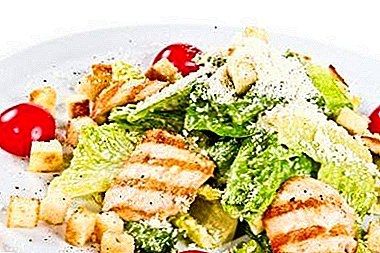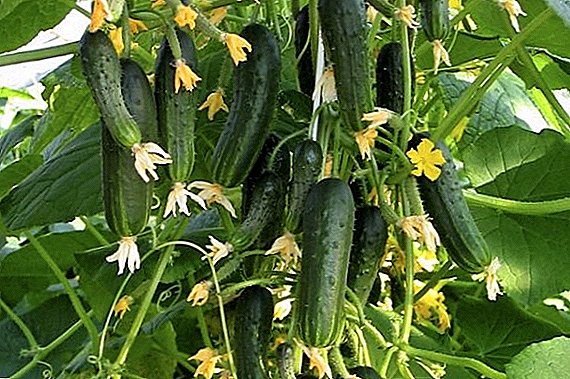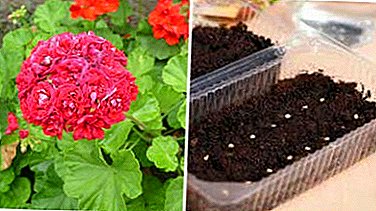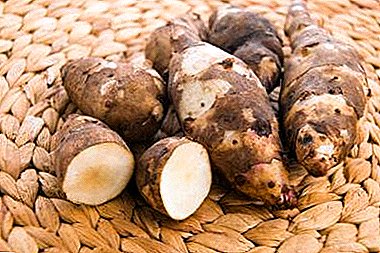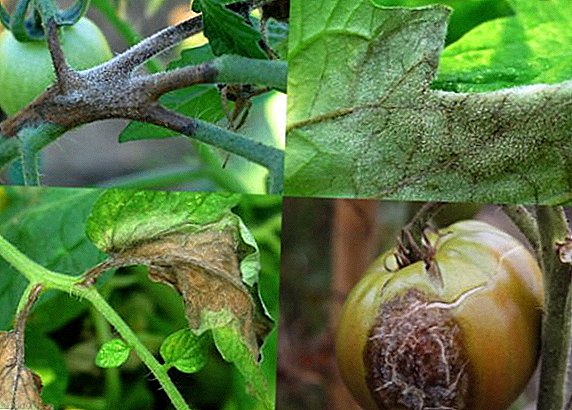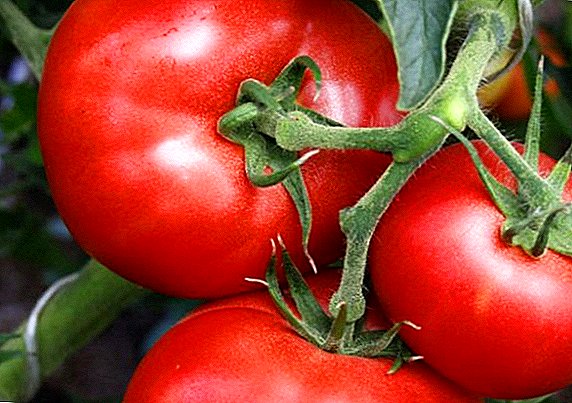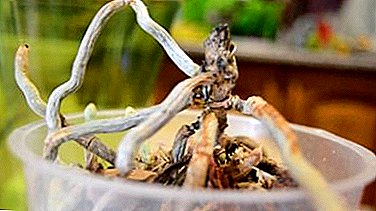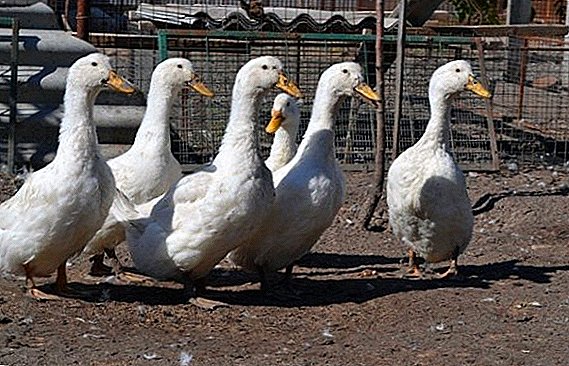 Blagovarskaya duck is a bird, not only decorating any yard with its attractive appearance, but also able to please with a large number of eggs and tasty meat. Simple content and undemanding make it a good addition to farmers and agriculture. A calm disposition, good productivity, resistance to disease - all this makes the duck a wonderful poultry. And how to maintain it, and what is required for this - read below.
Blagovarskaya duck is a bird, not only decorating any yard with its attractive appearance, but also able to please with a large number of eggs and tasty meat. Simple content and undemanding make it a good addition to farmers and agriculture. A calm disposition, good productivity, resistance to disease - all this makes the duck a wonderful poultry. And how to maintain it, and what is required for this - read below.
Inference history
The cross of this duck (cross is a mixture of hybrid breeds and lines of domestic birds, which is most often created for industrial purposes, since the production of crosses occurs under strictly specified conditions) was introduced relatively recently, in 1998, at the Blagovarsky plant, from there bird and got your name. For breeding were taken two similar lines of poultry, which allowed to bring the best for egg production and meat quality cross. 
Appearance and physique
This type of duck has the following external indicators:
- plumage color - white prevails;
- the beak and legs are distinguished by a bright saturated orange tint;
- the body of young individuals is wide and horizontal;
- general construction - large, with a long body and a developed large pectoral region;
- the neck is long and constantly elongated;
- heads are big and massive.
Important! Color beak and legs - Not only a cross-country trait, but also a health indicator. Bright orange color says about well-being. If the color becomes pale, then this may indicate a disease of the birds or poor conditions of their maintenance.
Character
Cross is different calm and friendly temper. Although sometimes broilers can be quite active and mobile in the first months of life, even despite their large size. The balanced character allows individuals to adapt well to new conditions of detention and other animals. Feel good in the team, among other breeds of ducks. 
Productive characteristics
It is the productive performance of representatives of this cross made them welcome guests of any farms. They are not only well acclimatized, but also possess high taste qualities of meat, give large offspring and are distinguished by good preservation of young stock.
It is interesting to read about the beneficial properties and the culinary use of duck eggs, meat, fat.
Egg production, color and egg weight
Birds live quite a long time, the average life expectancy of one individual is about 20 years, but it is rarely kept for such a long time. Egg production begins in the first year of life and lasts up to 5-6 years.
Seasonal average - 240 eggs from one layer under one year old. In the second year of maintenance, rates of hens grow by 10-12%. Also, eggs obtained during this period show the best incubation qualities. The young stock bred from the eggs of the older hens grows faster than the one that is bred from the eggs of young one year old ducks.  To obtain the maximum number of eggs, you need to ensure that 4 ducks each have one drake. If there are more birds, fertility will decrease. One egg weighs about 90-100 grams, has a dense, clean, white shell.
To obtain the maximum number of eggs, you need to ensure that 4 ducks each have one drake. If there are more birds, fertility will decrease. One egg weighs about 90-100 grams, has a dense, clean, white shell.
Important! If a hen gives a lot of eggs, she can change the color of the beak and paws, it becomes paler. It also changes the weight of the duck: if it drops sharply, It is necessary to introduce additional feeding and monitor the state of the layer.
The incubation period is 28 days, but at this time it is necessary to monitor the conditions of detention and the humidity in the nest.
Mass of duck and drake, meat yield
When breeding, this cross shows the best performance: 98-100% of the fertility of eggs and 80-85% of hatchability of ducklings. At the same time, a high rate of mass gain in young ducks stands out significantly, so they are ready for slaughter at the age of 1.5-2 months
6 weeks after the birth of the bird weighs about 3 kilograms. And at week 7, one duck shows about 3.5 kilograms, and drake - 3.7-4 kilograms of weight. It is not recommended to keep the bird further, as the weight begins to decrease, and the feed consumption remains at the same level. Therefore, this time is considered the most successful for slaughter.  Meat yield is 86% with gutting in half, 68% - with complete gutting. The fat content of meat is about 35-37% of the whole carcass, it is very tasty and appreciated by breeders.
Meat yield is 86% with gutting in half, 68% - with complete gutting. The fat content of meat is about 35-37% of the whole carcass, it is very tasty and appreciated by breeders.
Find out how much a duck eats before slaughtering and how to chop a duck; how to pluck a duck without hemp.
Diet
Cross proved to be beneficial for the maintenance, as it does not require any special food, and its quantity should not be very large. At the same time, if you adhere to all conditions of detention and feeding, the bird grows very quickly and has good meat quality indicators.
Ducklings
The first few days (up to 10 days inclusive) ducklings should be given boiled chicken eggs, after which they are transferred to meat waste (approximately on the fourth day of their life). You can gradually add small chopped greens or duckweedThis is a must, since if the duckweed is excluded, the ducks may start to hurt. In the first 10 days, the chick should receive no more than 50 grams of food per day.
It is also recommended to include in the diet and low-fat curd with chalk - With it, young animals receive the necessary minerals to strengthen the bone system. On the 10th-12th day, a small amount of potatoes, small grain waste and gravel are introduced, a small amount of salt should also be added to the food.  Ducklings under the age of one month must be given milk with diluted baker's yeast (from 10 to 30 days of life). Feeding frequency - every 2.5-3 hours. From 11 to 20 days of life, young animals should receive about 160 g per day, from 21 to 30 days - 260 grams.
Ducklings under the age of one month must be given milk with diluted baker's yeast (from 10 to 30 days of life). Feeding frequency - every 2.5-3 hours. From 11 to 20 days of life, young animals should receive about 160 g per day, from 21 to 30 days - 260 grams.
Also, little ducklings can be given bugs and wormsas the body needs animal proteins. By the way, the diet can be formed on the basis of a special starter feed sold in specialized stores. It is already enriched with all necessary components, vitamins and minerals.
Read also about growing ducklings in an incubator.
Adult ducks
Adults eat the same as the young, except for eggs, milk and cottage cheese. Chopped greens also need to be included in the diet, it can be mixed with the same meat waste or potatoes. The diet of adult ducks includes ground barley, oats, corn, bran and oilcake.  Chalk and gravel must be given, as they help to clean the intestines. Gradually increase the amount of salt with bone meal. Feeding is best done several times, but not less than twice. An adult individual about 2 months old needs about 400 grams of feed per day.
Chalk and gravel must be given, as they help to clean the intestines. Gradually increase the amount of salt with bone meal. Feeding is best done several times, but not less than twice. An adult individual about 2 months old needs about 400 grams of feed per day.
Did you know? The fun of throwing flat pebbles into the water in order to get as many of their jumps as possible is called running frogs in many nations, but in Poland and Hungary this way "launch ducks".
Conditions of detention
The content of the birds is undemanding, but it is recommended to maintain cleanliness in poultry houses. The bird also does not tolerate the increased air humidity in the house, the presence of insects and sudden changes in temperature, as this may provoke the appearance of diseases. There are also no special requirements for the room, but it is desirable that each bird has enough space for living and sleeping.
Requirements for the room
There are no special requirements for a duckling or a poultry house. It is desirable that in a place where the birds will sleep and winter, there is enough light, ventilation is present (without drafts), the heating system. Warm ducks, especially small ducks, must be warm. Comfortable temperature for them - from +28 to +33 degrees, so special lamps are often placed in the house. Then the temperature is gradually reduced - to +25 degrees in the next weeks of life. The best temperature regime for adult ducks is 18 ... 20 degrees above zero.  At 1 square meter is placed no more than 3 ducks, as they begin to grow more slowly in constraint. In the room must be placed drinkers, feeders and nests for hens. The latter should be placed freely, have sufficient height (at least 50 centimeters), stand in a shaded place. Nests are better placed remotely, at least at a distance of half a meter from each other.
At 1 square meter is placed no more than 3 ducks, as they begin to grow more slowly in constraint. In the room must be placed drinkers, feeders and nests for hens. The latter should be placed freely, have sufficient height (at least 50 centimeters), stand in a shaded place. Nests are better placed remotely, at least at a distance of half a meter from each other.
Learn more about building a barn for ducks, as well as whether chickens and ducks can be kept in the same room.
As a drinker for adult ducks you can use a trough, but ducklings need automatic drinkers. It is better to choose feeders oblong and with high walls, since Ducks love not only to splash water, but also to scatter feed from feeders. For litter, you can use sawdust, peat, straw and wood chips. You need to change it quite often, at least twice a month.
Place for walking
Birds need to provide a place for walking. No special construction is required. The plot can be fenced with a meter or a half height fence, it is also desirable that the pen be partially covered with a canopy to protect the ducks from rain and sun. Well, if the pen will have access to the reservoir. 
Access to water
The presence of a reservoir is very important - birds find a duckweed necessary for nutrition and health. Often ducks eat sand, which helps clean the intestines. And access to water is necessary for the birds to carry out all the water procedures and bathing. It is also a guarantee of good development and health, since without being in water, individuals rarely gain the necessary weight.
If there is no natural reservoir, then you need to build an artificial one. In extreme cases, place in the yard a few large troughs in which birds can splash.
Read also about the breeding of ducks of other breeds: musk, Peking (Star-53), Bashkir, mulard, blue favorite.
How to endure winter cold
Ducks tolerate cold quite well, but you need to build a warm house. The temperature should not fall below 10 degrees. It is desirable with heating and a sufficient amount of straw bedding (about 5 centimeters). The bird does not tolerate drafts, so before winter you should close and warm all the cracks.
Walking on the street can be done, but not longer than a couple of hours a day. Swimming is also possible (about 15-20 minutes) if the weather is good. If the temperature drops below -10 degrees, then it is better to walk indoors or barn. Duration of daylight should be about 8 hours. Feeding is carried out three times a day, if the frost is especially strong, it is recommended to mix warm water or broth into the food.
Did you know? Wild ducks cannot fly during molting, since they lose all their primary feathers during this period.
Video: cross-country ducks
Blower ducks - one of the most suitable crosses for growing and breeding. One of the bonuses that the owner receives is high resistance to diseases and viruses, so ducks rarely get sick. They give a large number of eggs, take root well in any conditions and are easy to maintain. And their meat is very tasty, appreciated by many and considered dietary.


